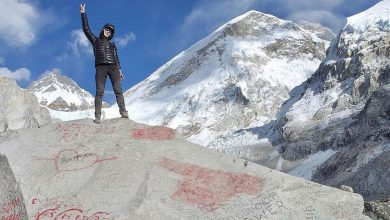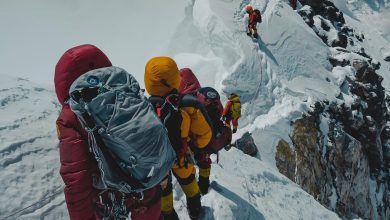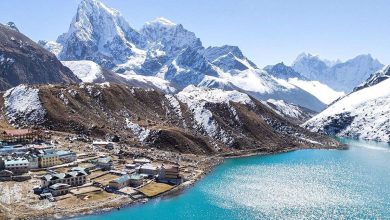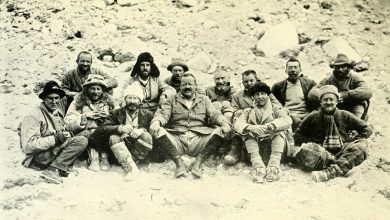Everest Sleeping Beauty: Story of Francys Arsentiev
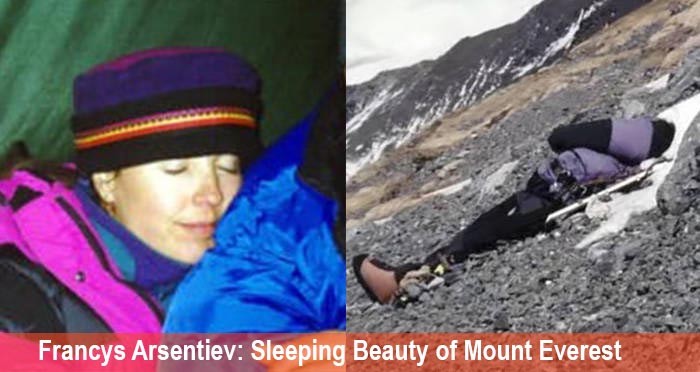
Mt Everest (8848.86m) is one of the most desired mountain climbing adventures in the world. The stories revolving around the Mt Everest expedition are fascinating. Most of the stories retold by climbers are inspiring. However, some of them are quite tragic and will send shivers down your spine.
One of the most famous stories in the Everest region is that of Mount Everest Sleeping Beauty. Now you may wonder what exactly Everest is a sleeping beauty? It is an endearing term used by climbers to describe Francys Arsentiev. Francys was a climber who perished on her way back from a successful ascent of Mt. Everest in 1998.
On May 22, 1998, Francys Arsentiev made her name in record books as the first American woman to reach the top of Mt. Everest without supplemental oxygen. The expedition team also included her husband, Sergei Arsentiev. The couple had previously successfully ascended Russian peaks before.
However, the challenging weather conditions and lack of oxygen led to her death while returning to base camp. Francys also lost her husband on the same expedition just a day before she lost her own life. It is widely considered in the mountaineering world as one of the most tragic events.
Moreover, these stories can be pretty vital for mountaineering enthusiasts. They can learn what to do and what not to do on an expedition in the high Himalayas. The mountaineers can also learn about the excruciating trips of the highest mountain in the world. Read on to know more about Mount Everest sleeping beauty and other related information in detail.
The Story of Everest Sleeping Beauty

Francys Arsentiev was born in Honolulu, Hawaii. From childhood, Francys had a passion for mountaineering and climbing adventures. She grew up admiring the mountains and climbed various peaks around the world. She also had a dream of climbing Mt Everest without supplemental oxygen from a young age.
Francys arrived at Everest Base Camp in May 1998 with her husband, Sergey Arsentiev. They made their first attempt on May 20 but had to turn around as their headlamps failed. On May 21, they started their attempt again but had to turn around only after 50-100m.
Finally, after many challenges, Francys and her husband were able to summit Mt. Everest successfully. Francys became the first American woman to reach Mt. Everest summit without supplemental oxygen. Moreover, their expedition had many challenges related to weather. Many intense wind situations made the expedition team postpone their journey a few times.
They had to stay in the mountain for a few days because of the weather conditions. Their headlamps also failed in their final ascent. Their journey without supplemental oxygen made them tired and also reduced their ability to make calculated decisions. Besides, their descent was even more challenging as they had to spend around three days above 8000 m.
They even got separated in their journey. Francys got stuck along the trail, whereas Sergey was able to return to base camp successfully. Even after waiting for a couple of hours, Francys did not return. A worried Sergey went back to search for her along with oxygen.
An Uzbek team, also on an expedition to Mount Everest, found Francis in a half-conscious state. She was in a weak state from a lack of oxygen and frostbite. The Uzbek team tried to help her and even carried her for some distance. But they could not go further due to logistical issues.
Ian Woodall and Cathy O’Dowd, two other climbers from a different Mt. Everest expedition team also spotted her during their journey. The challenging weather, dangerous location, and her condition made it difficult for them to help her. Francys asked them not to leave her alone, but they had no choice as their lives were at risk. Everest sleeping beauty breathed her last at the same spot where these climbers saw her.
Sergei went missing as well after being spotted by the Uzbek team two days earlier. Finally, after around two years, they found the body Sergey. It is widely accepted that he fell from a cliff while on his way to find Francys. Ian and Cathy described her appearance as pristine white and waxy due to frostbite. She laid there still half-conscious as they left her. Therefore, she was lovingly called “Everest sleeping beauty.”
Who is Mt. Everest Sleeping Beauty?
Mt. Everest Sleeping Beauty is Francys Arsentiev, the first American woman to summit the world’s highest point, Everest standing at 8848m, without supplemental oxygen. She died on 24th May 1998, two days after summiting Everest.
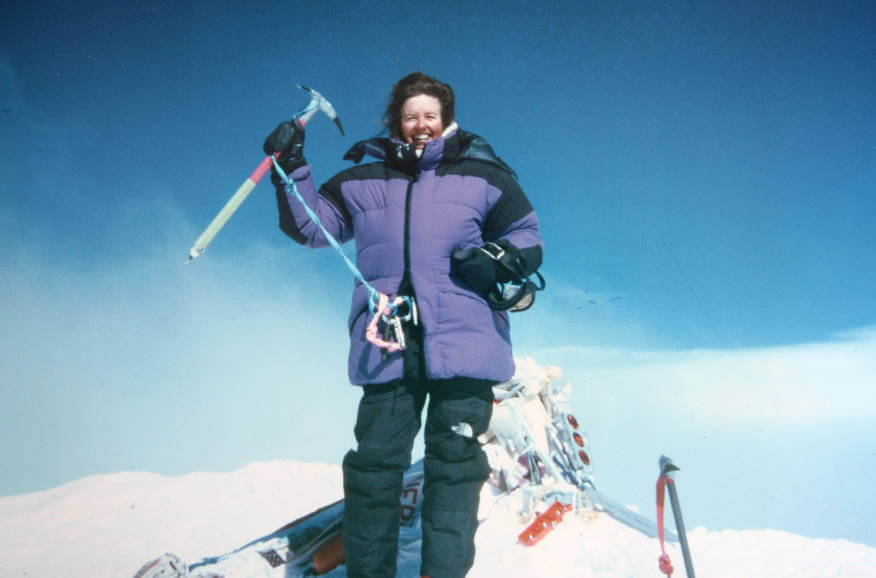
Early Years
Born as Francys Yarbro on 18th January 1958, she was a native of Honolulu, Hawaii. Her parents: John Yarbro and Marina Garrett, are White.
When Francys was six, she went to the Colorado mountains with her father. The early encounter may be the reason for her love for the mountains.
She enrolled at The American School in Switzerland and attended various other schools in the United States. After high school, she joined Stephens College and subsequently graduated from the University of Louisville. Also, she has a Master’s degree earned by attending Phoenix’s International School of Business Management.
Francys was married to John Abel in her late teen in 1977. The couple divorced the following year.
After that, she worked extensively as an accountant in Telluride, Colorado.
In 1992, Francys remarried. She tied the knot with fellow mountaineer Sergei Arsentiev from Russia.
What Happens When A Mountaineer Meets A Mountaineer?
Climbs mountains together!!!
Francys and her husband Sergei summited many Russian peaks together. The couple became the first to ascent unclimbed Peak 5800m. They named Peak 5800m “Goodwill.” Further, they conquered Denali 20,194 ft (6,155 m) via the West Buttress.
Moreover, Arsentiev climbed Mount Elbrus, 5,642 m (18,510 ft), summiting east and wets peak, and then descended ski down, becoming the first U.S. woman to achieve so.
With adequate mountaineering experience now, Francys Arsentiev thrived to do something bigger than anyone could only dream of. She intended to summit Everest without using supplemental oxygen.
Francys Arsentiev’s Mount Everest Journey
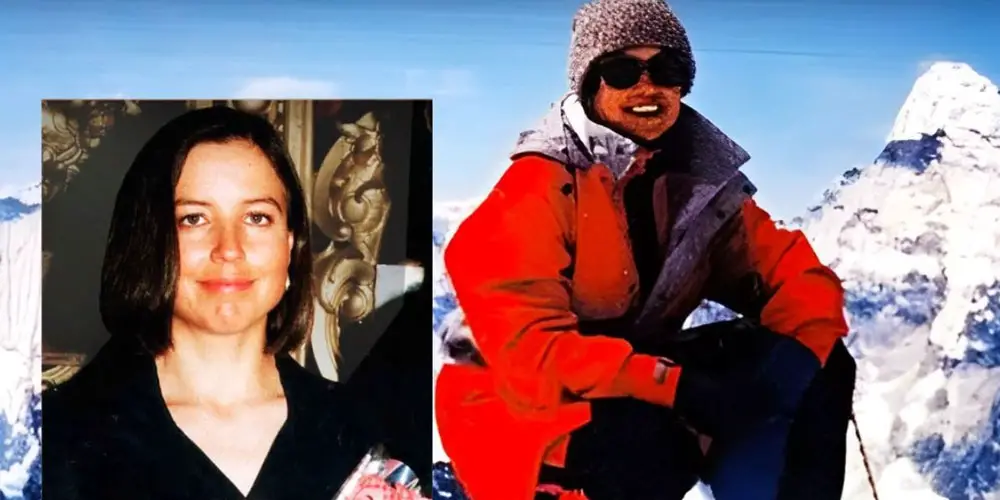
In May 1998, Francys Arsentiev and her husband, Sergei Arsentiev, arrived at the Everest Base Camp. On May 17th, they ascended to the North Col 7,020 m (23,031 ft). The following day, they headed to 7,700 meters.
On May 19, they made their way high up to Camp 6 (8200 meters). They radioed that they were fit and all set to make the summit attempt tomorrow at 1:00 am.
As scheduled: they attempted the summit on May 20th; however, it turned out to be a huge failure following their headlamps failed. On May 21st, they stayed at Camp 6 for the second, ascending 50-100 meters before returning.
On May 22nd, they gave a second try for the summit, starting early, around 2-3 AM.
Uzbekistan expedition’s leader, Anatoli Shabanov, reported he observed Francys and her husband, Sergei Arsentiev, from the base camp with a 60-fold telescope. By 10:00, the husband-wife climbers reached the First Step. At 14:00, they were at the Second Step (about 8,750 m).
Francys’ pace was very slow without oxygen. Radgapov, a climber from the Uzbekistan expedition about 17:45, during the descent, met the two just 100 m from the summit. Radgapov reported he tried to convince them to be decent to camp down because it was quite late to the summit.
On 22nd May, they summited late, which made them unable to descend to their camp, where they claimed they had put warm clothes and oxygen. The reports show the couple spent three nights above 8000m, in a danger zone, without oxygen.
On the morning of the 23rd of May, Sergei safely descended back to the camp but found his wife had made her down and was still up there in danger. The two had separated in the evening of the previous day.
Sergei then quickly set off to find his, carrying oxygen and medicine. Uzbek’s team encountered him on the way up, and that was the last time he was seen alive.
What happened next was uncertain. Did Sergei meet his wife for the last time or not?
Uzbekistan Team Save Attempt
On 23rd May, Uzbek climbers encounter Francys a few hundred meters down the Everest summit. By then, Francys was already half-conscious, unable to move independently, and affected by Hypoxia (oxygen deprivation) and severe frostbite.
The Uzbek team gave her supplemental oxygen. Also, they carried Francys down as far as possible; however, they depleted their supplemental oxygen and were forced to abandon Francys while she was still alive.
On the morning of May 24, Ian Woodall, Cathy O’Dowd, and several more found Francys Arsentiev on their way to the summit, exactly where she had been left the evening before. Meanwhile, Sergei’s ice axe and rope were discovered close to that area, but he was nowhere to be found.
Woodall and O’Dowd dropped their Everest dream and attempted to help Francys for over an hour. However, Francys was already poorly ill, and again the hazardous location and the freezing weather obligated their try.
Later that day, Francys Arsentiev passed away. Her corpse was still clipped onto the guide rope.
O’Dowd recalls,
“We recognized who she was from that last sentence. I didn’t know her immediately — her face was frost-bitten, but not in the way one thinks. It was a waxy, white, and incredibly smooth look, like Sleeping Beauty. It made her look much younger than she was. ”
That’s why Francys Arsentiev’s corpse was called “Sleeping Beauty.”
The Last Words Of Francys Arsentiev
Don’t Leave me: Why are you doing this to me? And I am an American.
What led to the death of Francys Arsentiev, Mount Everest Sleeping Beauty?
Francys Arsentiev, or the Sleeping Beauty of Mount Everest, lost her life high on the mountain due to Hypothermia and Cerebral Edema at the age of forty.
Who Is Francys Arsentiev Climbing Partner & Husband, Sergei?
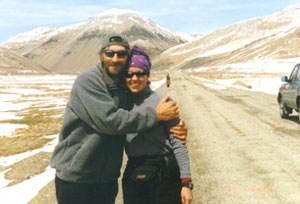
Sergei Anatolievich Arsentiev, the Snow Leopard, was born in 1958 in St. Petersburg.
Sergei was the elite European mountaineer who reached the Summit of Everest on the 1990 Everest Peace Expedition. Along with Everest, he summited Kangchenjunga and Annapurna.
Besides, Sergei was an electrical engineer. He has worked with manufacturing spy satellites in his home country, Russia. Like Francys, Sergei was previously married. Unfortunately, his wife passed away in an automobile accident.
It was in 1991 in Annapurna that he met his future wife, Francys Arsentiev, the gorgeous American climber. The pair was nicknamed “Romeo and Juliet of the Cold War.” In the following years, in 1992, Sergei Arsentiev and Francys married.
Did Francys Arsentiev’s Husband Sergei Arsentiev’s Body Was Recovered?
Sergei Arsentiev’s fate was unknown for almost a year. In 1999, “Mallory and Irvine” expedition member Jake Norton found Sergei’s frozen corpse lying lower on the mountain face. It is believed Sergei lost his life in a fall while attempting to rescue his wife.
Is Sleeping Beauty still on Mount Everest?
Francys Arsentiev, the sleeping beauty of Everest, is still somewhere on Everest. Notoriously, she was on a climbing route and visible for nine years.
On 23rd May 2007, Woodall, who had previously helped Francys during her descent, located the corpse, paid a final ritual, and dropped the body to a lower location, removing the sleeping beauty of everest from the climbers’ view.
Legacy
Francys Arsentiev was named the 8th woman to Summit Everest from the North Side. Further, she was the first American woman to Summit the North Side of Everest and the first woman from the United States to the summit without supplemental oxygen.
Francys Arsentiev’s Son Paul
Her son, Paul, was approximately 11 when Francys Arsentiev died on Everest. As per 1999 reports, Paul lived with his grandfather in Telluride, Colorado.
Before Francys Arsentiev died on Everest, she wrote to her son, drawing a map of her journey there. “Hi, Paul! We’re at Base Camp. Miss you and love you. XXX Mom.”
Final Say
Mt Everest (8848.86m) is on the bucket list of every avid mountain climber. Around 5000 climbers have already conquered the summit, and 300 have perished on the mountain. The Mt. Everest Expedition is widely considered one of the most outstanding achievements in the mountaineering world.
Many stories are revolving around the mountain. Francys Arsentiev, or “Everest sleeping beauty,” is quite famous among mountaineers. Francys Arsentiev recorded her name as the first American woman to climb Mt. Everest without supplemental oxygen. However, she lost her life while descending as she had to spend three nights without oxygen.
Her stay at a high altitude remained a critical reason why she succumbed on the mountain. At any other lower elevation, she would have an increased chance of survival. Moreover, the sleeping beauty Everest is often told as a cautionary tale. Mt Everest sleeping beauty pictures are also available online. Climbing Mount Everest without oxygen is achievable, as many climbers have done so in the past.
However, not all individuals are completely built the same way. Furthermore, there are different physical capabilities of other individuals. Hence, climbers should act accordingly and not make hasty decisions on the mountain. We hope you learned about this tragic event in Everest through this article. Have a safe trip!
